For Immediate Release
Contact: dmawempio@widma.gov
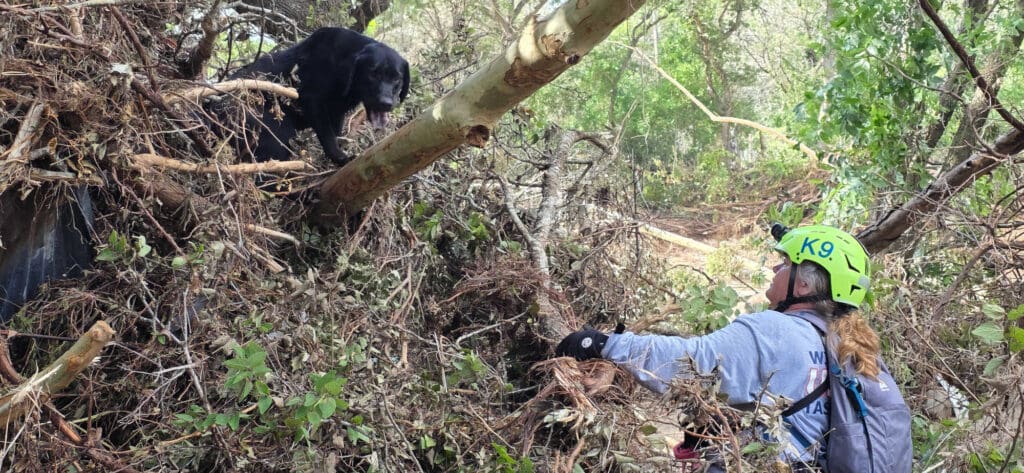
Twenty-one members of Wisconsin’s Urban Search and Rescue Task Force returned to Wisconsin in late July following a 14-day deployment in Central Texas. The state’s urban search and rescue task force, known as Wisconsin Task Force 1 (WI-TF1) sent an initial team of five people and three canines on July 8, just days after intense flash flooding.
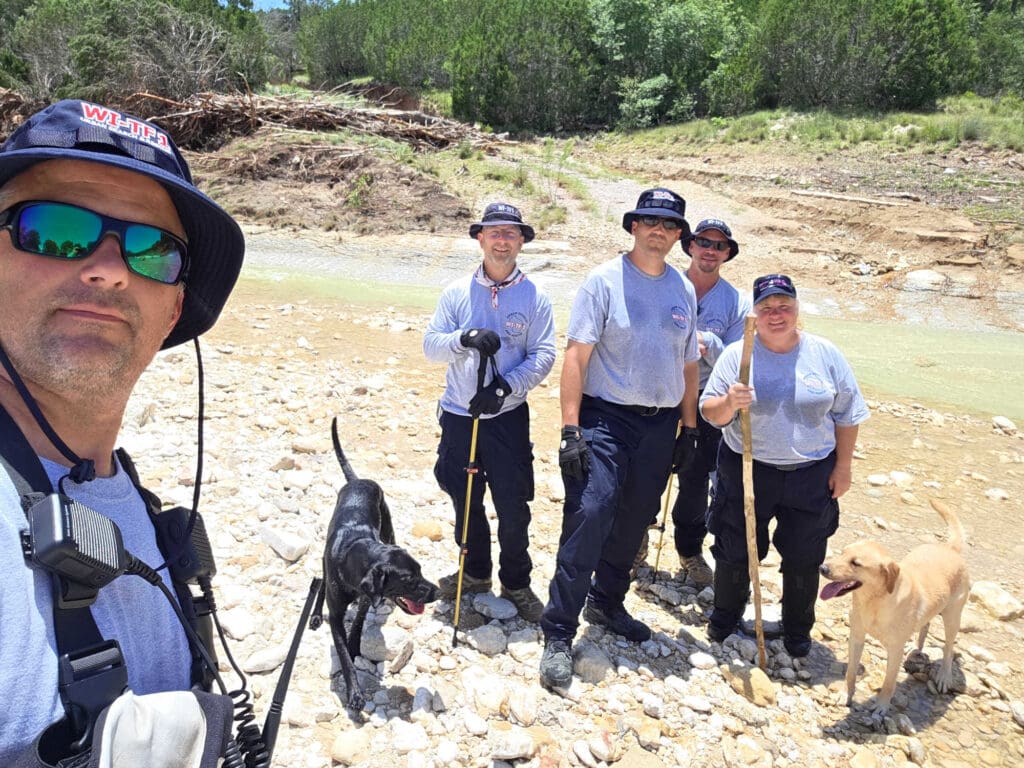
During their deployment, the team would wake up in the early morning hours to get ready for a full day of work in the Texas heat. They often met up with Texas Task Force 2 to begin the arduous task of searching for those still missing after the devastating flooding impacted communities in the Texas Hill Country.
“We would get the plan for the day at the base of operations and then head out to the site to start our search for the day,” said Wisconsin Task Force member and K9 handler Andy Kissh. “Rivers would be divided by sections, and we would aim to clear certain sections during the day. We were easily putting on five to eight miles a day, I’d say.”
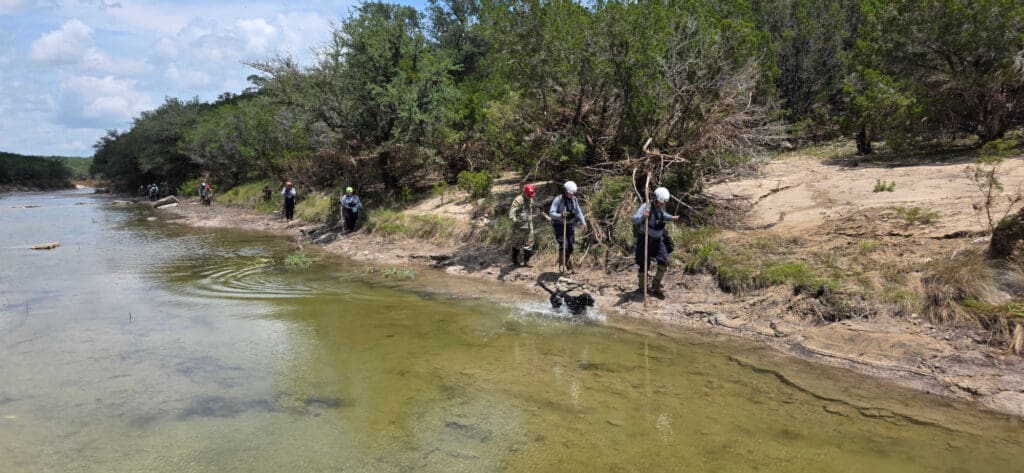
Kissh and the other WI-TF1 K9 handler, Michelle Metzner, would work in shifts to search the terrain. He said Metzner might start with K9 Merlin or Duke in the morning, and then roughly two to four hours later, would switch with Kissh and K9 Reaper. They would then switch again if necessary.
The WI-TF1 K9s go through rigorous training and certification to become either a live find or human remains detection K9. This is done through Wisconsin K9 Search Specialists Inc. a non-profit started by Kissh and Metzner.
“When our dogs are walking, they are only trained to alert on human remains,” said Kissh. “During our training, we will throw distractors out there, such as dead animals, cat food, or chunks of hot dogs are hidden to confuse the K9s on non-human type scents.”
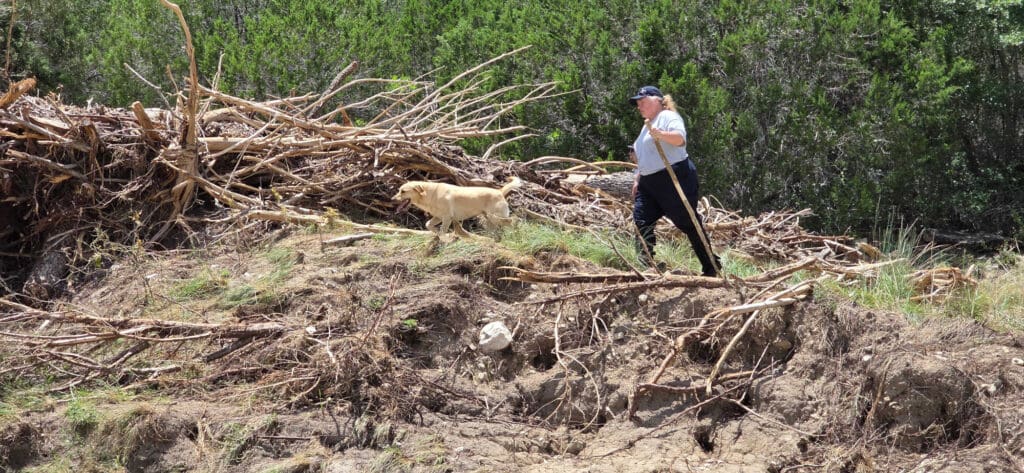
The K9s were trained to bark if human remains are detected and rewarded when they find something. During the long days of searching various environments, including riverbeds and debris piles, the team may or may not get a positive hit. Those positive hits were marked to receive additional follow-up by another crew.
“Having a human remains detection dog, you want them to do a fantastic job, but you hate their job is needed,” said Kissh. “As a handler, it’s great to clear an area, thanking you didn’t find anyone, but your K9 doesn’t get rewarded for zero finds during a three-hour site search. When the K9 does find someone, you are happy for your K9 to get rewarded, but at the same time, they sadly found somebody.”
Four days after the K9 team departed for Texas, 16 members of WI-TF1 departed Wisconsin for Texas to assist with swift water searches in areas along the Guadalupe River, including the Canyon Lake area. Both requests for assistance came through the Emergency Management Assistance Compact, a national mutual aid system that enables states to assist other states during an emergency or disaster.

“We sometimes searched eight to 10 miles and other days hundreds of yards,” said Bob Zimmerman, the WI-TF1 leader for the swift water team. “As time went on the number of missing decreased as people were found, and we were able to target areas and were able to cross off and clear areas.”
For Zimmerman, it was his second out-of-state deployment, with the mission following Hurricane Helene in North Carolina as his first. He said during this mission in Texas there were five members of the 16-person swift water team on that previous deployment to North Carolina.
“It was good having a mixture of veterans to deployments, and those never deployed on a mission,” said Zimmerman. “In North Carolina, we were attached to more individual fire departments and had a very specific sector to work in. This time, in Texas, we were in a larger division and moving around at a moment’s notice in the sector.”
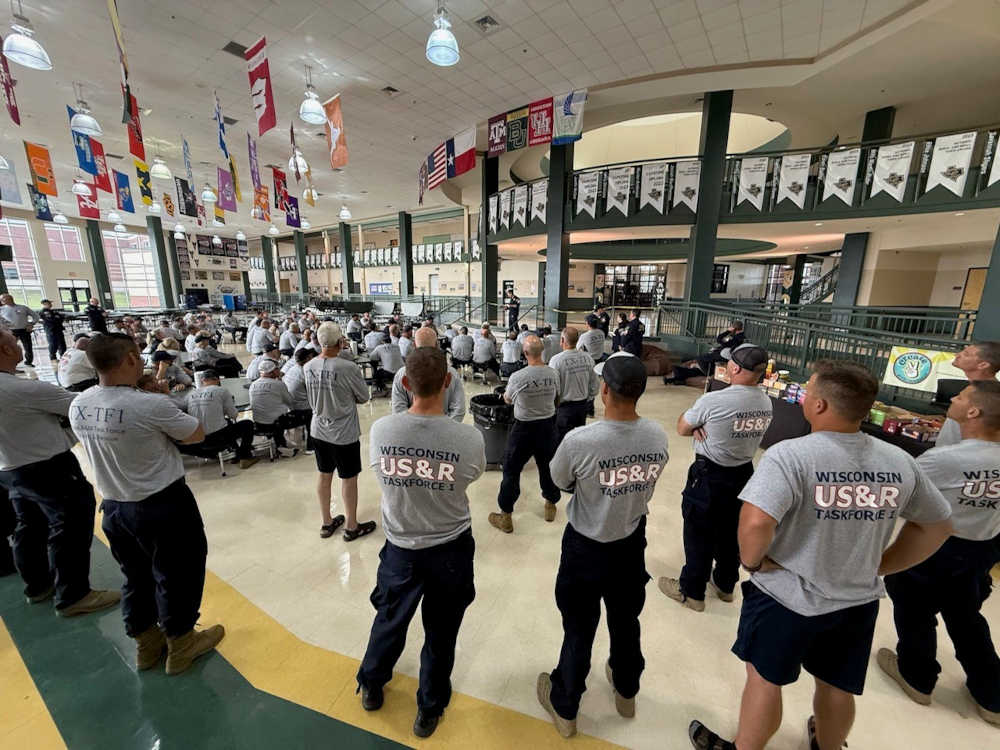
Zimmerman said another difference between North Carolina and Texas deployments was the amount of damage. He said in North Carolina, the damage was more widespread, and crews were more spread out. In Texas, the damage was more compact around the Guadalupe River area.
“We saw homes torn apart and cars buried in North Carolina and saw the same thing in Texas,” said Zimmerman. “Water has a tremendous force and the amount of volume of water that came through the Guadalupe River was significant. There were some places where there were just foundations left behind and cars found in the river.”
Although both Wisconsin Task Force groups were working in the Texas Hill Country along the same river, they never crossed paths in the field. Although they worked in different areas, both Kissh and Zimmerman shared similar experiences and are thankful for the support in Texas and back home in Wisconsin.
“When you are approached by somebody on the street that’s thankful for what you are doing, it’s pretty humbling,” said Zimmerman. “It’s our privilege to go down there and help. We are just one small part of what is going on down there.”
“It felt pretty good with people in Texas and back here at home, knowing we were out there and doing what we are trained to do,” said Kissh. “Our dogs were put to work and used for a great purpose, and it was nice to get that support.”
The K9 team returned to Wisconsin July 23 and the swift water members came back on July 28. Both teams departed and returned to Wisconsin Emergency Management’s Regional Emergency All-Climate Training Center at Volk Field in Camp Douglas. The location is where WI-TF1 trains regularly throughout the year. The training and out-of-state deployments are equally important to build a more resilient state, according to Zimmerman.
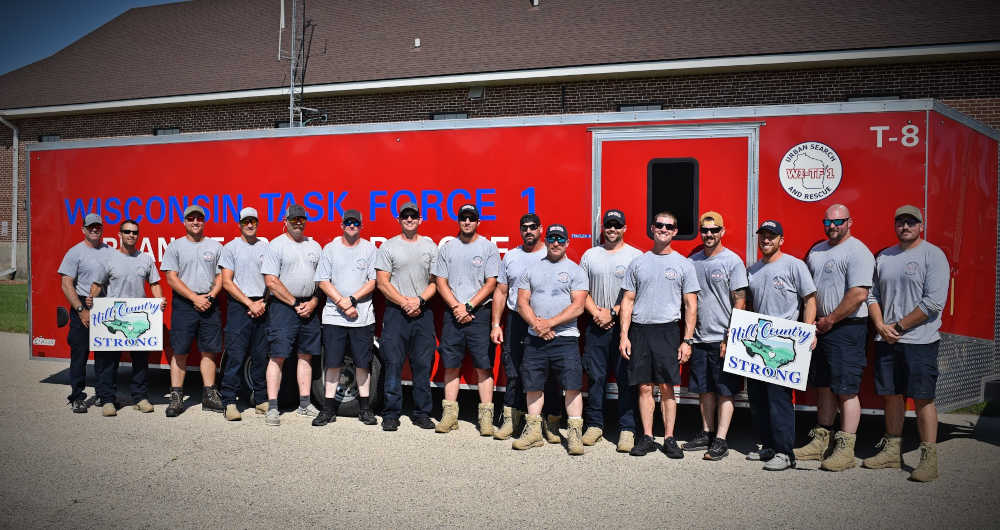
“Every time we do this we get better for when it happens in Wisconsin, and it eventually will happen here. The knowledge we gained in North Carolina and Texas, we can apply here in our state,” said Zimmerman. “We are ready to go out the door tomorrow if the need arises and help.”
Members of WI-TF1 deployed to Texas were from the following fire departments: Antigo, Appleton, Beaver Dam, Green Bay, Janesville, Neenah-Menasha, Menomonie, Racine, Sheboygan, and Superior. WI-TF1 is a response asset owned and managed by Wisconsin Emergency Management, a division of the Wisconsin Department of Military Affairs. The task force currently has more than 130 highly- trained personnel including structural engineers, canine handlers, and technical search specialists.

